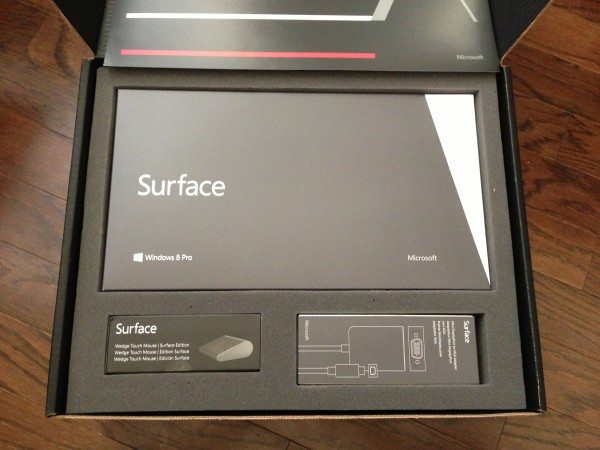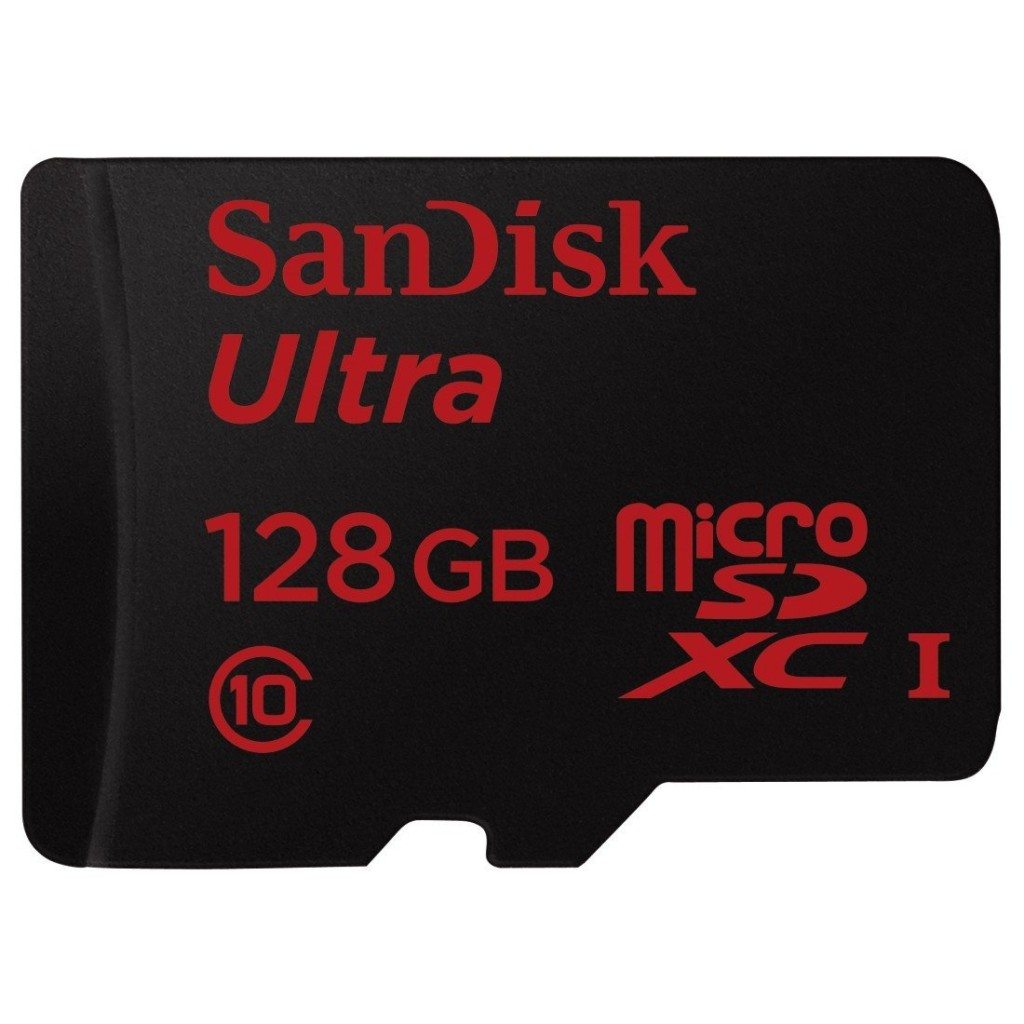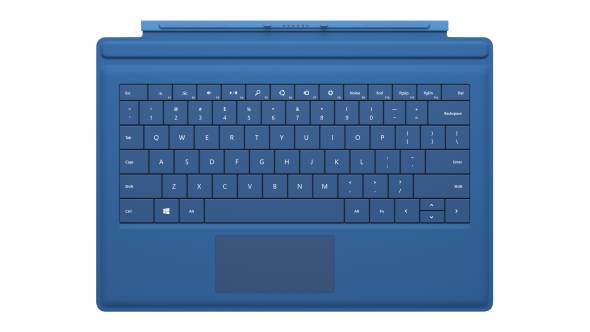Alright. So, let’s get this party started. Today is the unboxing.
First–in the interest of full disclosure–let me say that this Surface Pro is on loan from Microsoft. I already have a Samsung Series 7 Slate tablet running Windows 8, and a Surface RT, and an iPad…so let’s just say I don’t really need any more gadgets right now. I’m not saying I won’t buy one (we’ll see at the end of the 30 Days I guess), but I just want to be clear up front that this isn’t my Surface Pro.
The origin of my Surface Pro tablet also helps explain the unboxing of it. Your run-of-the-mill Surface Pro that you buy at Best Buy doesn’t come with some of the things that came in my box. I have the standard 128GB Surface Pro tablet, power supply, and digitizer pen–however, mine has the added bonus of coming with both a Touch and Type cover, a Microsoft Wedge Touch mouse (Surface edition), and the adapters to connect the tablet to either a VGA or HDMI display. The Surface Pro itself is $900. The Touch cover is $120, and the Type cover is $130. The VGA adapter is $40, the Wedge mouse is $70, and I don’t see the HDMI adapter listed on the Microsoft Store site, but we’ll assume it’s around $40 as well. So, to be fair, my Surface Pro experience is based on spending $1,140 plus tax (the Surface Pro, plus the Type cover, Wedge mouse, and HDMI adapter–I’m not using the Touch cover or VGA adapter so I’m not including those).
Microsoft has become much more “Apple-esque” with both its hardware design and packaging lately. Everything about the presentation of the box and opening it to reveal its contents is an experience unto itself. Everything fits snugly into place, and looks impressive. It makes you feel like you’ve made a good investment, and that you’re getting your money’s worth.
One thing I found interesting is that the Surface Pro itself is thinner than I expected. Granted, it’s thicker and heavier than my iPad, and I know it’s thicker and heavier than the Surface RT, but based on many of the initial reviews of the Surface Pro I had this impression in my mind that it should be noticeably so, and that isn’t really the impression I got picking it up. In case you don’t know, one of the main reasons it’s thicker is that because it’s running a traditional Intel architecture it runs hotter than its ARM cousin, and it needs a cooling mechanism. Microsoft raised the back of the tablet slightly, and put vents around the sides to dissipate the heat.
That brings me to a couple other areas where I feel like Microsoft really did a great job in thinking through the fine details. When it’s in “ultrabook mode”–sitting on a desk with its kickstand propping it up, and the keyboard case open–you might not care how or where the heat vents. But Microsoft also remembered that it’s a tablet, and that you are also going to pick it up and hold it as such. They didn’t want the heat to vent on your hands, so the Surface Pro uses the accelerometer to determine the orientation of the tablet, and adjust the internal fans so the heat dissipates where your hands aren’t.
The other thing Microsoft did that contributes to the polish and feel is that display adapter is angled to perfectly fit the slope of the side of the Surface Pro. When it’s plugged in, it fits snugly as if it’s a permanent, natural extension of the tablet. Microsoft thought of everything.
Well, no. Not “everything”. Not really. For example, there’s no docking station.
It’s great that Microsoft included the HDMI adapter so I can connect the Surface Pro to my monitor, but it really needs a docking station. I have to have the HDMI adapter plugged into the display port at the bottom right, and that gets in the way of the power adapter. Either the two need to fight each other for space, or I have to flip the power adapter so the cord runs up instead of down. The USB port is on the opposite side. The net result is that I can, in fact, connect the Surface Pro as a “PC” while I am sitting at my desk, but it’s a tedious, ugly process.
The Samsung Series 7 Slate, and Dell Latitude 10–two other Windows Pro tablets–both have docking stations that enable you to just snap the tablet in place and instantly connect to power, wired Internet, HDMI, and additional USB ports for things like printers, keyboards, and webcams. The docking station is a crucial element in using the device as a traditional desktop PC. You plug it into the dock at your desk–voila! It’s a PC. You need to go mobile, so you grab it out of the docking station and head for the door with tablet in hand.
That flexibility–the innate ability to be both a PC and a tablet in one–is the very core of the Windows 8 tablet value proposition. To not have a docking station takes away the beautiful simplicity of using it as a PC.
OK. It’s out of the box and connected on my desk, ready to go. Next, I’ll turn this baby on and dig in.
Day 1: 30 Days with Surface Pro
Day 3: Logging in to Windows 8
- Navigating Cybersecurity Complexity - July 18, 2025
- AI Voice Clones and Mobile Phishing: The Cyber Threats You’re Not Ready For - July 11, 2025
- Rethinking Cloud Security for the Evolving Threat Landscape - July 11, 2025




Comments are closed.